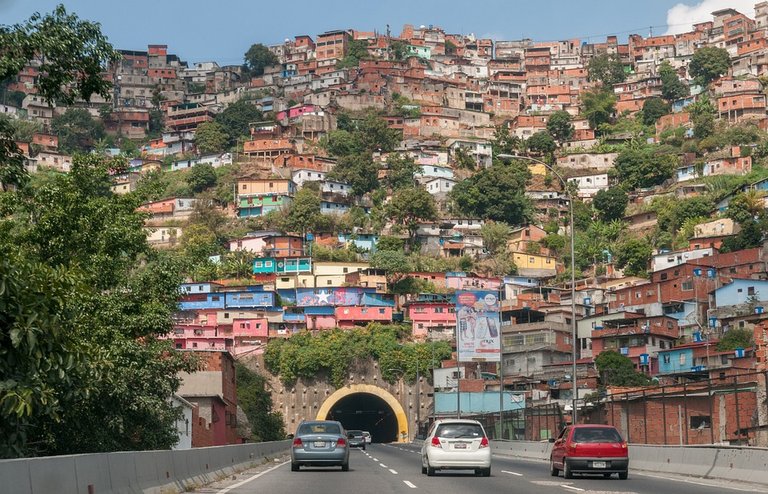Evolution of the world population, on having studied the population, the first thing that we are interested in to know, it is all the persons live at present on the ground and how it has evolved and since they will advance in the future, since for many centuries, the population of our planet remained practically stable, the number of births were almost equal to that of deaths, with this it was preventing the societies from growing. Also, when finally it was managing to grow, ironically, it was flogged by an epidemic, a war, or a famine was eliminating big part of the population, with the time the population was growing, many factors historical the expansion is named very much to new regions, creating new nations and demographic explosion, at the same time, is born many needs, there happens following the tendency of an order superior to the aptitude to produce resource food and economic, managing to look for new places with more resources, creating rather problems of distribution, of ground, resources, for naming it.
The census.
It is a statistical instrument, where his application, it is an inventory of the population realizing in a concrete moment and with a territorial certain scope. For a census be valid to statistical effects.
They are considered to be three dimensions:
Universality: it is necessary to understand all the persons, who reside in the registered territory.
Individuality: they must enumerate to these persons one for one.
Simultaneity: all the quiet information must correspond to the same period of time.
The information request in the above mentioned questionnaire, which not always is the same, they include, age, and marital status, of the different members of the family, level of studies, professional situation, means of trasporte, which are used habitually.

The thickness of the population.
The electoral roll.
It is the inventory of the persons, who live in a certain municipality, in contrast to the census, which gathers information regarding a concrete moment, the electoral roll is an alive document, in which it goes away to registering, as it takes place, the births and deaths, the marriages, the changes of domicile. Also it differs from the census, in which it is discreet and his information only can leak out numerically and globally, never of individual form, whereas the electoral roll is public.
The thickness of the population.
The global numbers on the world population, it is not enough to know the demographic real situation of our planet, for it it is necessary to study also the population density. It is called a population density to the existing relation between the number of individuals and a surface unit, good is km2.
Distribution of the world population.
The thickness of the population is a very important fact, since it makes clear, that the inhabitants of the ground are in regions, leaving others almost as the polar regions, the deserts and the warm and humid zones near to the equator, where scarcely they live nobody, there are other regions, principally in Europe and Asia, where they go over a Superior of 1200 hab/km2.
The set formed by Europe and Asia represents only 36 % of the surface of the emerged ground, more than 90 % of the humanity lives in the north hemisphere, the thickness of the population is much major in the coastal regions, which inside the continents, on the other hand the population density diminishes with the height and in general, the high mountains are almost deserted. The concentration of the most important populations of the world registers in oriental Asia and in the northeastern sector of State joined.
The growth of the population.
At the time of the population studies, one of the most important information to bearing in mind, it is his growth, this growth is analyzed so much on a global scale as nationally, locally, and can be natural or real. The natural growth of the population, comes given by the existing difference between the number of birth and of deaths, is calculated multiplying by hundred the difference, between the number of been born alive and the numbers of deceased and dividing the result by the entire population, the number obtained is named an index of vegetative growth or index of natural growth and expresses itself in percentage.
The real growth, the difference between the persons proves to add to the natural growth the migratory balance, that is to say, that they have come to a place and those who it have not left, on a global scale, the natural growth, since anybody, for the time being anybody can leave the planet, but is for the death. On the other hand, recounted to countries and regions, the real growth indicates exactly absolute the evolution of the population.
The importance of the valuation of birthrate and mortality,
The valuation of birthrate, it is a number that is obtained multiplying the number of been born alive by thousand and dividing for the result, for the entire population and the valuation of mortality, it is calculated in the same way, like I date back to information the number of deceased, the study dela mortality allows to establish the life expectancy, which is the measurement of years, through which normal conditions, a person can hope to live, in the developed societies, the life expectancy exceeds at present 75 years; in the changes in the countries in route of development this number they range between 40 and 60 years.
Bibliographical consulted.
Hiernaux-Nicolás, Daniel and Lindón, Alicia. (Publishers) Treated about Human Geography. Barcelona: Publishing Autonomous Metropolitan Anthropos-university, 2006.
Sánchez-González, Diego; Ledezma-Elizondo, Maria Teresa; Rivera-blacksmith, Nora Livia (2011). Geography Humanizes and urban crisis in Mexico / Human Geography and urban crisis in Mexico. Monterrey: Autonomous university of New León. p. 278.
Henri Leridon and Laurent Toulemon (2014), Demography. CEDUA, ColMex.
Vinuesa, J. and D. Puga (2007), Skills and exercises of Demography. Madrid: INE. Collection “ Author's books ”.
Creek, A., And. Manzanera, and A. Pascual-EdS - (2007), demographic and social Statistics. Statistical diffusion. Jaén: University of Jaén.


